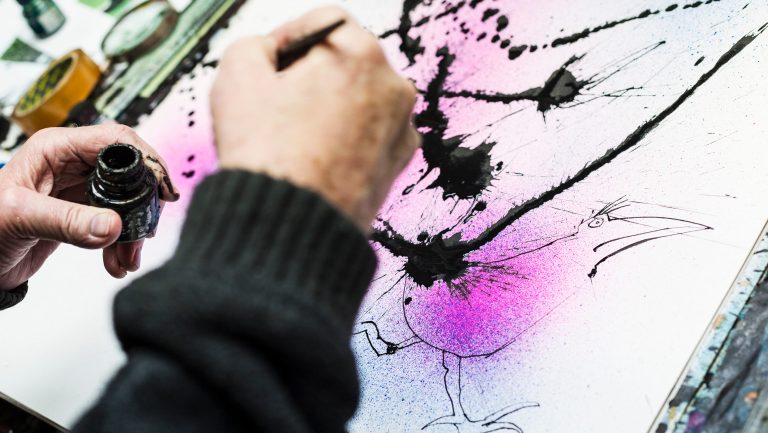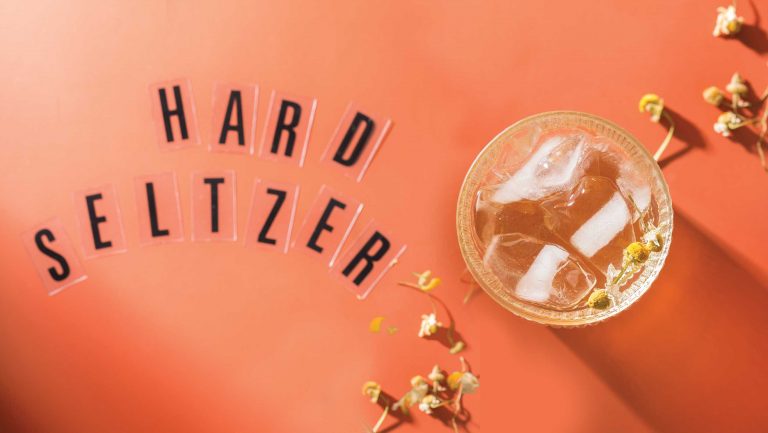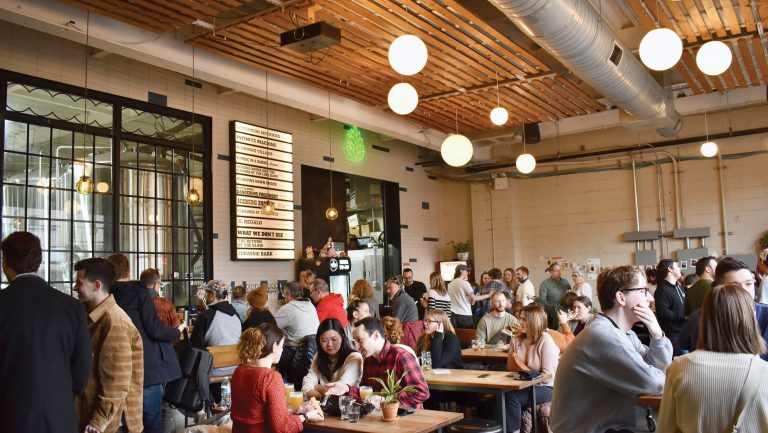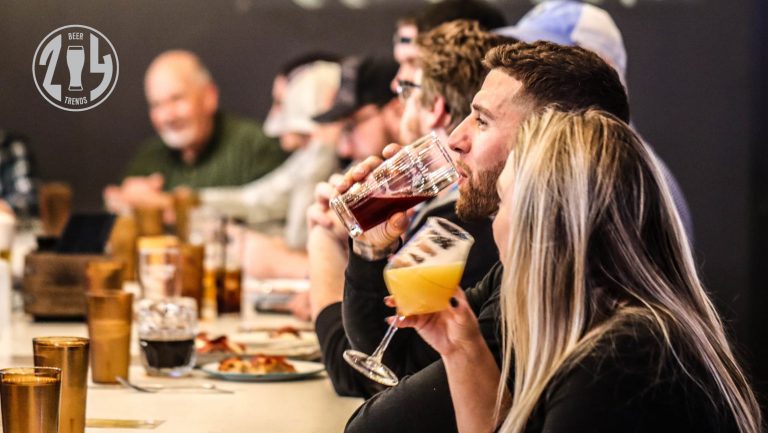With thousands of breweries vying for shelf space, it’s critical to stand out. This principle exists in the literary world too, which is why Hunter S. Thompson paired up with the illustrator Ralph Steadman, whose artwork helped the author’s oeuvre pop. Flying Dog Brewery in Frederick, Maryland, followed Thompson’s lead—one of the brewery owners happened to be Thompson’s neighbor—and hired Steadman to design its labels.
Steadman’s first attempt not only brought customer attention to the bottle but created a legal fiasco for the brewery. Steadman had added the words Good Beer, No Shit to the Road Dog Porter illustration. Flying Dog won the obscenity case against the Colorado Liquor Commission, and the art’s message and the lawsuit, according to Ben Savage, Flying Dog’s chief marketing officer, helped define the brewery in the busy market. Savage explains that the brewery gives Steadman a name and an idea of the beer’s style and character. “[But] he turns around and draws whatever the hell he wants.… He’s an artist.”
While Flying Dog’s bark, and fight for its First Amendment rights, helped raise the brand’s profile, the 21st Amendment Brewery in San Francisco has used its designs to do battle in the can market. “With a can you’ve got … 360 degrees to tell your story,” says Nico Freccia, a cofounder of 21st Amendment Brewery. “More space to be a little more unusual.”

Don’t miss the latest drinks industry news and insights. Sign up for our award-winning newsletters and get insider intel, resources, and trends delivered to your inbox every week.
This encouraged 21st Amendment to use longer beer names—like Brew Free! or Die IPA and Hell or High Watermelon—and play out whimsical scenes on aluminum. The IPA, for instance, features the Rushmore presidents—Lincoln busting out from the monument, Teddy having a laugh, the other executives more stoical—while the watermelon wheat depicts Lady Liberty seated on the Golden Gate Bridge.
But as Freccia explains, “Printing on aluminum cans is definitely its own art form.” Artists and designers are tasked with creating graphics that work with the can’s shape. Among the challenges are that the tapered top distorts graphics, only about 150 degrees of the can will be visible at one time, printing on metal is more complicated, as the medium (compared with paper labels) is a more difficult canvas for rendering graphics, and designers are limited to five colors plus the silver of the can.
While some larger breweries estimate that it can cost up to $60,000 for new label graphics (while noting that it’s difficult to pinpoint costs of design versus those of production, especially for breweries with in-house design teams), smaller breweries interviewed say they commission artwork for their bottles and cans for as little as $1,000.
One of the first breweries to package its cans in a box, 21st Amendment found that perfecting the packaging presented unexpected challenges. At first, the brewery placed stories about its beers on the box ends and set its logo near the bottom of the cardboard container. But store shelves have lips, and space is tight. Consequently, the lip clipped the logo, and the stores displayed the short side of the box, featuring only the story and not the fantastical, more costly design. “You have to see it in the real world on the shelf,” Freccia says, adding that if customers can’t see the brewery name, beer style, and art, “you’re at a disadvantage.”
For Gigantic Brewing in Portland, Oregon, which wanted to use a different artist to design each of its labels, the challenge was to maintain brand consistency. Gigantic solved the problem by creating a graphic template that appears on each bottle, despite the wildly varying art that populates it from bottle to bottle. In Gigantic’s case, it’s the label layout that offers customers familiarity when browsing the brewery’s 22-ounce bottles. “We don’t give the artists any directions,” said Ben Love, Gigantic’s brewmaster and cofounder, noting that the company typically tells artists the beer name and style—but not always. They once told a Spanish artist that the beer was hoppy. “She did a huge frog,” Love says.
Whether it’s a wasp armed with a time bomb, or a shark battling a bear battling an eagle, the art all fits into Gigantic’s comic-book layout, allowing for design inventiveness without sacrificing brand recognition.
One of the most easily recognizable brands in the 22-ounce world is Rogue Ales from Ashland, Oregon. The brand’s serigraph prints are unified by the Rogue logo, placed over the heads of bearded or balding men (replaced by the occasional woman, fantastical beast, or fierce animal, depending on the product). Historical photographs of Oregonian fishermen and lumberjacks inspired these early designs, and with their silk-screened portraits, the bottles look collectible. The design costs more to execute than printing on cans or bottle labels, but it’s “an extra step that shows we care about the product,” says Rogue’s creative director, Hagen Moore. The bottle art may cost more, but Rogue—like 21st Amendment—has an in-house design team, which works to find efficiencies. And Moore notes that these elements help the beer “pop off the shelf.”
In craft beer’s saturated market, differentiation is also key. Grimm Brothers Brewhouse set its Loveland, Colorado, brewery apart by creating a German-style beer and extending the brand message onto store shelves with labels the feature the name of a Grimm Brothers’ tale and elements from the story, emphasizing the German connection and offering visual appeal. Label designer Josh Emrich’s artwork showcases characters that are bright, colorful, and familiar to all but that stand out from the dark backgrounds, where shadowy details offer intrigue and complexity. Like most brewers, Aaron Heaton, a cofounder of Grimm Brothers, says that the brewery puts its trust in Emrich to deliver. “He’s the expert,” Heaton says. “[My partner and I are] just two schmucks who make beer.”

Dispatch
Sign up for our award-winning newsletter
Don’t miss the latest drinks industry news and insights—delivered to your inbox every week.
Noah Lederman has written about beverages for the Chicago Sun-Times, BBC Travel, Beer Advocate, All About Beer, Draft, Beer Necessities, Roads & Kingdoms, and other publications. He writes the blog Somewhere or Bust and is the author of “A World Erased.” Follow him on Twitter.







